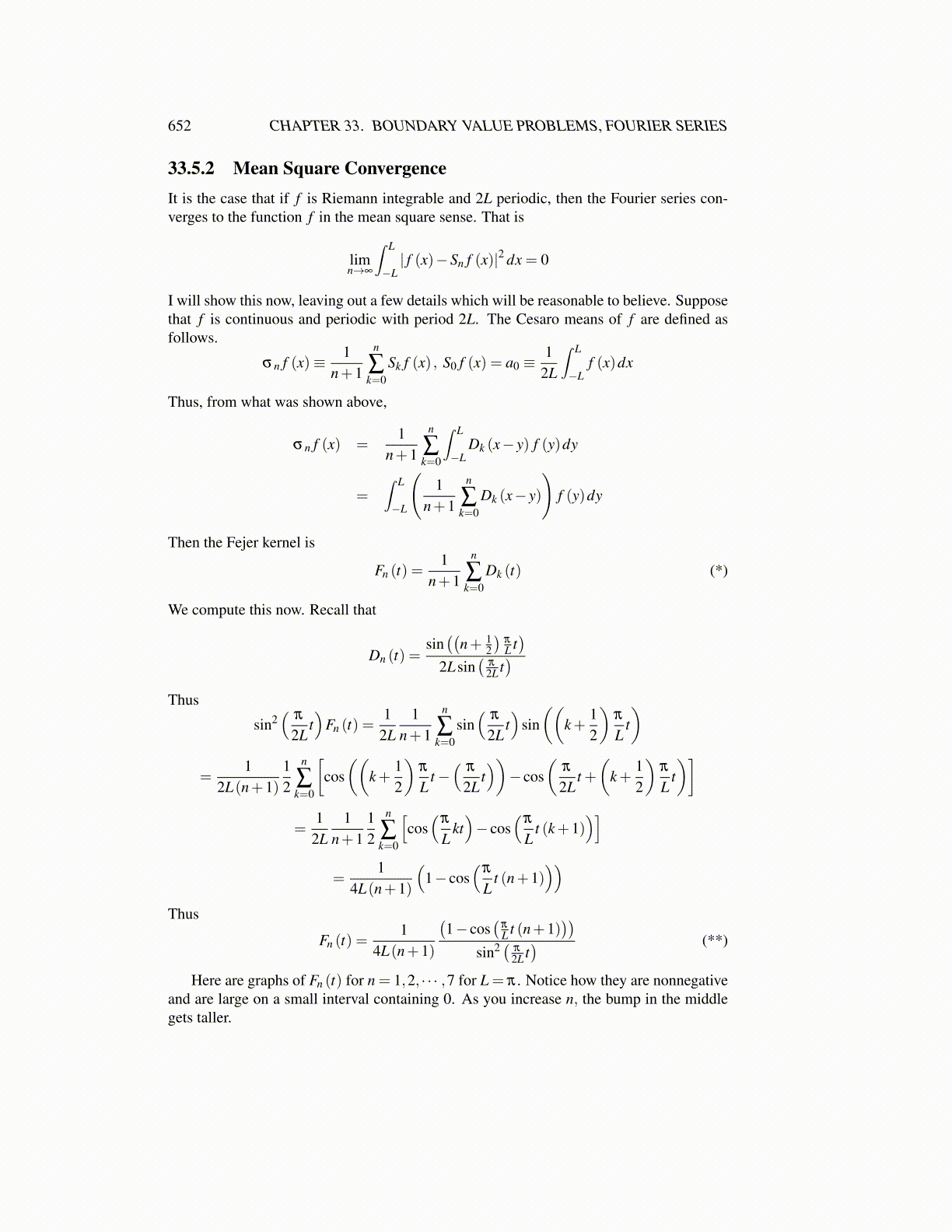
652 CHAPTER 33. BOUNDARY VALUE PROBLEMS, FOURIER SERIES
33.5.2 Mean Square ConvergenceIt is the case that if f is Riemann integrable and 2L periodic, then the Fourier series con-verges to the function f in the mean square sense. That is
limn→∞
∫ L
−L| f (x)−Sn f (x)|2 dx = 0
I will show this now, leaving out a few details which will be reasonable to believe. Supposethat f is continuous and periodic with period 2L. The Cesaro means of f are defined asfollows.
σn f (x)≡ 1n+1
n
∑k=0
Sk f (x) , S0 f (x) = a0 ≡1
2L
∫ L
−Lf (x)dx
Thus, from what was shown above,
σn f (x) =1
n+1
n
∑k=0
∫ L
−LDk (x− y) f (y)dy
=∫ L
−L
(1
n+1
n
∑k=0
Dk (x− y)
)f (y)dy
Then the Fejer kernel is
Fn (t) =1
n+1
n
∑k=0
Dk (t) (*)
We compute this now. Recall that
Dn (t) =sin((
n+ 12
)π
L t)
2Lsin(
π
2L t)
Thus
sin2(
π
2Lt)
Fn (t) =1
2L1
n+1
n
∑k=0
sin(
π
2Lt)
sin((
k+12
)π
Lt)
=1
2L(n+1)12
n
∑k=0
[cos((
k+12
)π
Lt−(
π
2Lt))− cos
(π
2Lt +(
k+12
)π
Lt)]
=1
2L1
n+112
n
∑k=0
[cos(
π
Lkt)− cos
(π
Lt (k+1)
)]=
14L(n+1)
(1− cos
(π
Lt (n+1)
))Thus
Fn (t) =1
4L(n+1)
(1− cos
(π
L t (n+1)))
sin2 ( π
2L t) (**)
Here are graphs of Fn (t) for n = 1,2, · · · ,7 for L = π . Notice how they are nonnegativeand are large on a small interval containing 0. As you increase n, the bump in the middlegets taller.